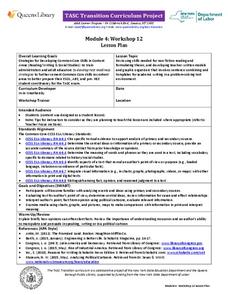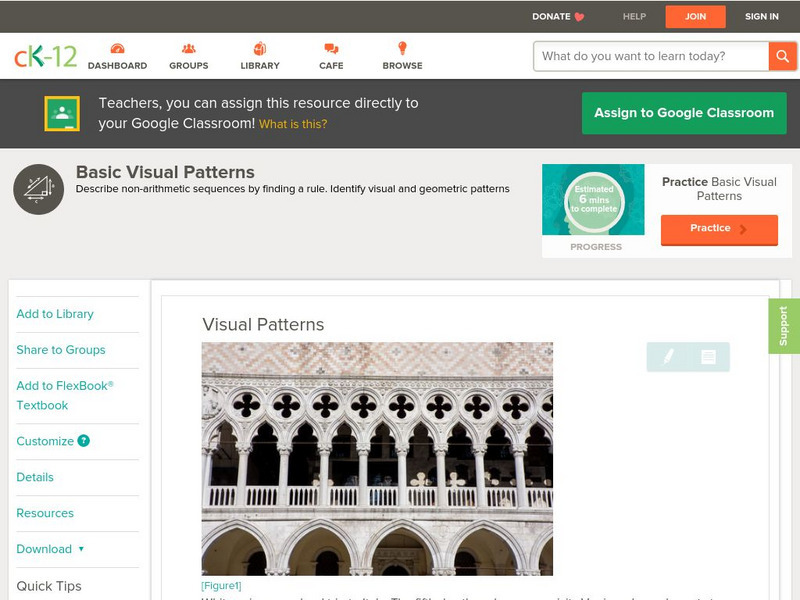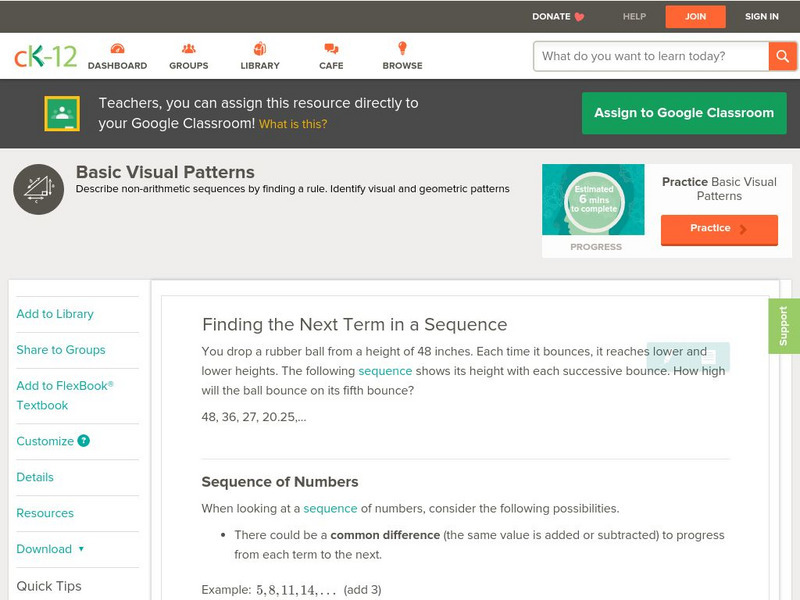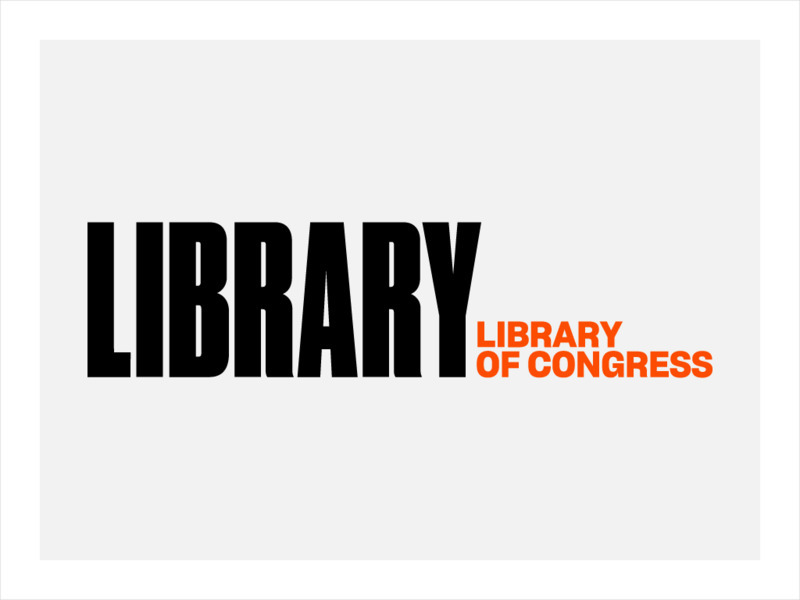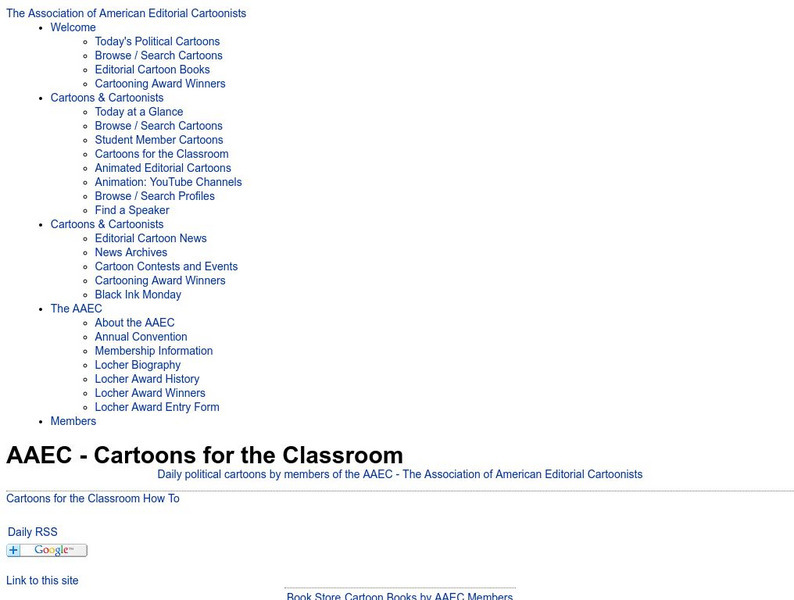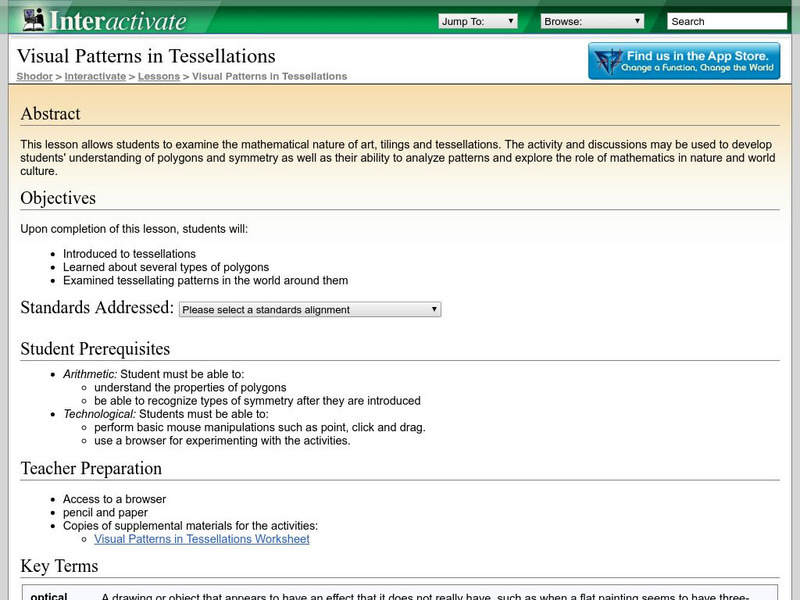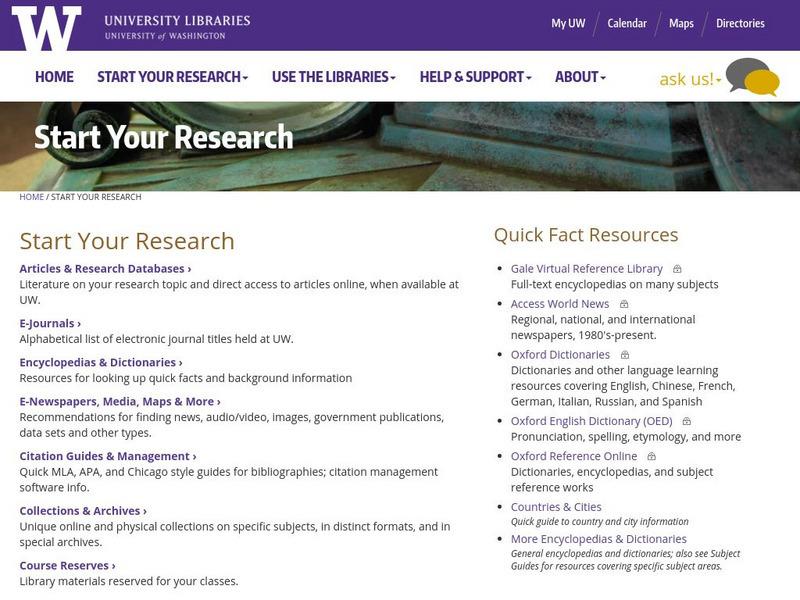EngageNY
TASC Transition Curriculum: Workshop 12
How can opinions slant facts? Workshop participants learn how to examine primary and secondary sources and identify the author's point of view. They also examine how visual art impacts the meaning and rhetoric of sources. Full of...
CK-12 Foundation
Ck 12: Geometry: Visual Patterns Grade 7
[Free Registration/Login may be required to access all resource tools.] Recognize and describe visual or geometric patterns.
CK-12 Foundation
Ck 12: Geometry: Visual Patterns Grades 10 12
[Free Registration/Login may be required to access all resource tools.] This lesson covers how to find the next term in a sequence.
Library of Congress
Loc: Introducing Students to Visual Analysis
Students will develop visual literacy skills by analyzing the images from John White Alexander's mural in the Thomas Jefferson building of the Library of Congress while learning about the history of the Library of Congress. Then,...
Newspapers in Education
Ni Eonline: Cartoons for the Classroom: Lessons Library
Newspapers in Education and the Association of American Editorial Cartoonists publish simple, inventive lesson plans and ideas for classes in editorial cartooning, caption writing, and news analysis. Lessons include "cartoon blanks" that...
Other
Literature Circles: Lesson Plans and More
What are the major roles in literature circles? Check out this site to learn more about the individual roles needed to form a literature circle. Includes links to various reading handouts and lessons.
Shodor Education Foundation
Shodor Interactivate: Lesson: Visual Patterns in Tessellations
This upper elementary and middle school lesson plan examines the mathematical nature of art, tilings and tessellations. Students will also explore polygons, symmetry, analyze patterns and explore the role of mathematics in nature and our...
PBS
Pbs Learning Media: Reach
REACH is a self-paced interactive reading program to engage parents and children as at-home reading partners. Designed by classroom reading specialists and aligned with kindergarten through third grade standards, these self-paced...
Other
Literature Lesson Plan
This lesson plan is for a character study that uses butcher paper, pens, pencils, and copies of assigned book. Students then complete a character study on at least two major characters.
PBS
Pbs Learning Media: Making Civics Real: Electoral Politics
In this lesson from Annenberg Learner, students divide into small groups to brainstorm and research specific community issues, prioritize the issues studied on the basis of what they have learned, present their findings to the class both...
ReadWriteThink
Read Write Think: Integrating Math and Literacy
This instructional activity provides the elementary teacher with an opportunity to integrate the concept of mathematics with reading literacy. Students use models to learn shapes, practice spelling the names and shapes, and learn to...
Better Lesson
Better Lesson: Movie vs. Book
In this lesson, middle schoolers compare the video version of the teleplay "The Monsters are Due on Maple Street" to the actual teleplay. (A teleplay is a play or script written for television.) The links to media in this lesson no...
Sophia Learning
Sophia: 5 Core Concepts of Media Literacy
In this lesson, students will engage in multiple parts of a lesson that guide students to uncover many levels of meaning in media messages. Discussion questions and a slideshow presentation are parts of the lesson that address the...
Texas Education Agency
Texas Gateway: Choosing Media for a Presentation
[Accessible by TX Educators. Free Registration/Login Required] This lesson will introduce students to the use of visuals and other media in their presentations that will keep their audiences clapping. When preparing for a presentation,...
ReadWriteThink
Read Write Think: Visualizing Using the Sketch to Stretch Strategy
Contains plans for three lessons to improve reading comprehension using a visualizing strategy called sketch-to-stretch. In addition to objectives and standards, this instructional plan contains links to sites used in the lessons as well...
Better Lesson
Better Lesson: Learning to Recognize and Use Strong Verbs
In this lesson, young scholars will listen to stories and determine the meaning of the word by using sentence-level context clues. They will think about the verbs that are used and think about how that verb appeals to their senses,...
Better Lesson
Better Lesson: Tie It Up With Transition Words to Write a Story!
Read, write, and present a digital narrative with transition words to help us put the events in order! After modeling the lesson, groups of students will write narratives to recount a short sequence of events, they will include details...
PBS
Pbs Learning Media: Common Sense Education: Identifying High Quality Sites
Learn how to "test before you trust" the sites and information found on the Web in this lesson plan and student handout from Common Sense Education. Assessing what you find on the Web is an essential skill for today's young scholars. Use...
Better Lesson
Better Lesson: Listen to and Follow Directions: Day 2
One important aspect of the common core is to prepare students to be able to participate in conversations and contribute accurate and relevant information. In this lesson, students listening skills will evolve as they translate verbal...
Better Lesson
Better Lesson: Go Figure With Figurative Language It Helps With Predicting!
In this lesson plan, students will use figurative language, digital tools, and illustrations to write a story. The teacher will model how to use an app that has onomatopoeia to create a story with a good beginning, middle, and end. A...
Media Smarts
Media Smarts: Lesson: Internet Time Capsule [Pdf]
In this lesson, students learn about the concept of "time capsules" and then apply the idea by selecting time capsule contents to represent both the time they live in and their own lives and tastes. They then extend this idea to online...
Other
University of Washington Libraries: Starting Research
If you need help knowing where to start your research, or if you're a teacher looking for a way to help students understand the research process, this resource is terrific. Interactive tutorials on a number of topics offer review quizzes...
PBS
Pbs Learning Media: How Disruptions Affect Animal Populations
Students explore the effects that ecosystem disruptions can have on animal populations. They learn about the disruptions that have driven three species-the Madagascar fish eagle, the Iberian lynx, and the rowi kiwi, to the brink of...
PBS
Pbs Learning Media: News and Media Literacy
This collection, which includes videos, blog articles, student handouts, lesson plans, and tip sheets for families, helps students identify, analyze, and investigate the news and information they get from online sources. Media literacy...
